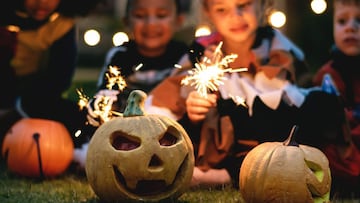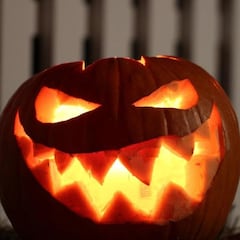What is the history, origin and meaning of Halloween?
Halloween is upon us once again, and ghouls, ghosts and scary creatures of all sorts are out and about. Where did our spooky rituals come from?


Halloween is the festival of everything spooky and it’s a big, big deal in the US, with Americans projected to spend $11.6 billion on the holiday in 2024, a little less last year’s record of $12.2 billion, according to the National Retail Federation. This makes it the largest commercial holiday apart from Christmas.
But Americans don’t just spend their hard-earned money on costumes for themselves and their kiddos, more and more Halloween enthusiasts buy costumes for their pets each year. Some of the top rating pet costumes are pumpkin, hot dog, superhero, cat (presumably for pets other than actual cats), and bumblebee.
READ ALSO: 10 easy last-minute Halloween costume ideas
Americans are expected to spend $700 million on costumes for their pets this year. Here are some tips and warnings about pet costumes that pet parents need to know:https://t.co/3VpjE9AVza
— KOMO News (@komonews) October 29, 2023
Incredibly, across the US, one full quarter of all the candy sold annually is bought for Halloween, but what are the origins of the festival? Time for a deep dive...
The beginning of Halloween
The rituals of lighting bonfires and warding off ghosts began with the ancient Celtic festival of Samhain (meaning “summer’s end”, pronounced “soe-win”). The celebration was originally celebrating the Celtic New Year which began on 1 November.
The Celts lived 2,000 years ago in Britain, Ireland and northern France. The Samhain festivities were based in welcoming the harvest and the “dark half of the year”; winter was often associated with death.
Crucially, Celts believed that on the night before the New Year began, the boundaries between the worlds of the living and the dead became blurred and that the ghosts of the dead came back to earth. Celebrations took place halfway between the fall equinox and the winter solstice. The celebration also involved prayer, and sacrificing cattle.
In 8th century Italy, the Christian celebration of All Saints Day, or All Hallow’s day was born when Pope Gregory III designated 1 November to honor, well, all saints. Encyclopedia Britannica suggests that this date may have been chosen “in an effort to supplant the Pagan holiday with a Christian observance”.
The evening before the main event became known as All Hallow’s Eve. The word “hallow” comes from Old English meaning holy or sanctified, and over time, All Hallow’s Eve on 31 October was shortened to Hallowe’en.
Origins of modern Halloween traditions
Many of the traditions we still associate with Halloween in the modern world come from Samhain. To mark the occasion of Samhain, the Druids (pagan religious leaders) used to light enormous bonfires, where the community burned crops and animals as sacrifice to Celtic deities.
According to Inside History, during the celebration, the Celts wore costumes, typically consisting of animal heads and skins, and attempted to tell each other’s fortunes. When the celebration was over, on returning home everybody re-lit their hearth fires from the sacred bonfire to help protect them during the coming winter.
All Souls’ Day was celebrated similarly to Samhain, with big bonfires, parades and dressing up in costumes as saints, angels and devils.
READ ALSO: Witches, vampires and Barbie to dominate Halloween festivities
These Halloween costumes go crazy 😂 pic.twitter.com/AcKjHw8nFF
— Daily Loud (@DailyLoud) October 28, 2023
In the US, as the settlers’ traditions were first forming, the customs of different European ethnic groups and the American Indians came together. So a distinctly American version of Halloween began to emerge. The first celebrations included “play parties” where communities would come together to share stories of the dead, tell each other’s fortunes, dance and sing.
Related stories
The parties began borrowing from European traditions and developed over time to include dressing up in costumes and going house to house asking for food or money, a practice that eventually became today’s “trick-or-treat” tradition. Later, it became difficult to separate Halloween from its roots of ghosts, pranks and witchcraft, but there was a move to separate the two because with those traits also came vandalism, and over time (by the 1950’s) Halloween lost most of its superstitious and religious connotations. Now it’s more about partying.
Trick-or-treating became an effective way for an entire community to share the Halloween celebration, keeping intact the element of mischief. Families could prevent tricks being played on them by providing the children of the town with small treats, and just like that, the modern tradition of Halloween was born.

